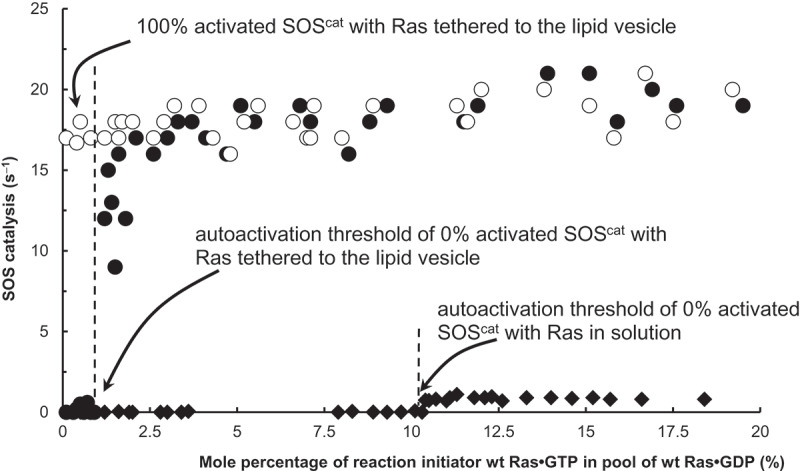Figure 7.

Threshold units of solution and lipid vesicle-tethered Ras for SOS autoactivation. We also performed fluorescence mant-based assays of the catalytic activity of SOScat for Ras in a solution and tethered to the lipid vesicle. The assay was initiated by addition of 0% activated SOScat (1 μM) to an assay cuvette containing the solution wt Ras loaded with mant fluorescence-tagged GDP* (wt Ras•GDP*, 1 μM, final concentration) mixed with various amounts of the reaction initiator (the solution wt Ras•GTP*, 0–20%) in the presence of excess GTP (1 mM) in an assay buffer. A mixture of the lipid vesicle-tethered wt Ras•GDP* (~3.0 × 103 Ras•GDP molecules/μm2, final density) with the reaction initiator (the lipid vesicle-tethered wt Ras•GTP*, 0–20%) also was used for this assay instead of the solution Ras mixture. We used a LS 55 Fluorescence Spectrometer to monitor the mant fluorescence changes by the SOS-mediated exchange of the solution or vesicle-tethered wt Ras•GDP* with the abundant free GTP to produce the solution or vesicle-tethered wt Ras•GTP, respectively. SOScat activities at a reaction time of 60 s were recorded and then plotted against the mole percentage of the reaction initiator wt Ras•GTP in a pool of wt Ras•GDP (%). A fully activated (100% activated) SOScat was used as a control for this assay
